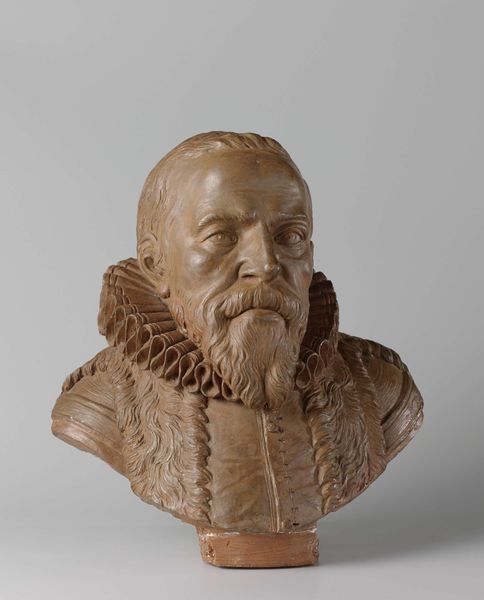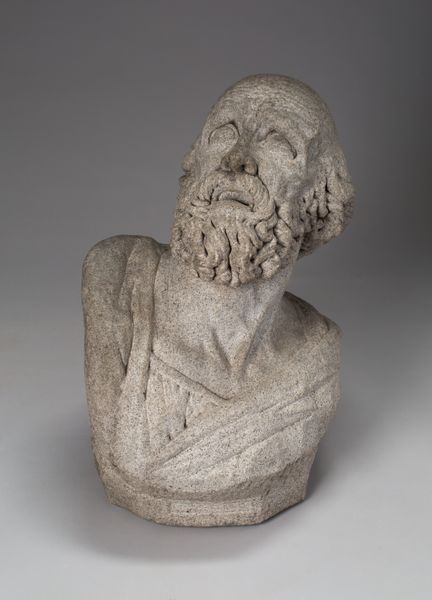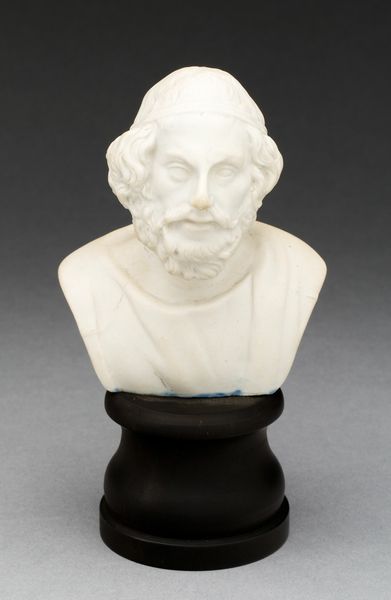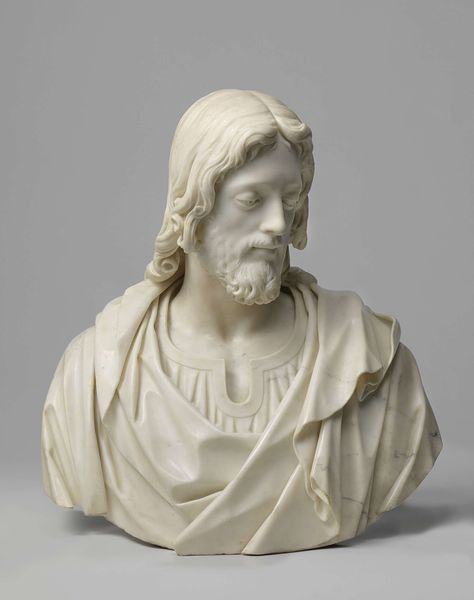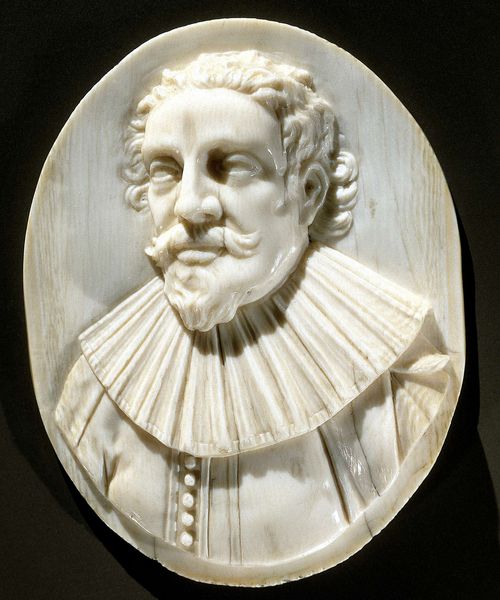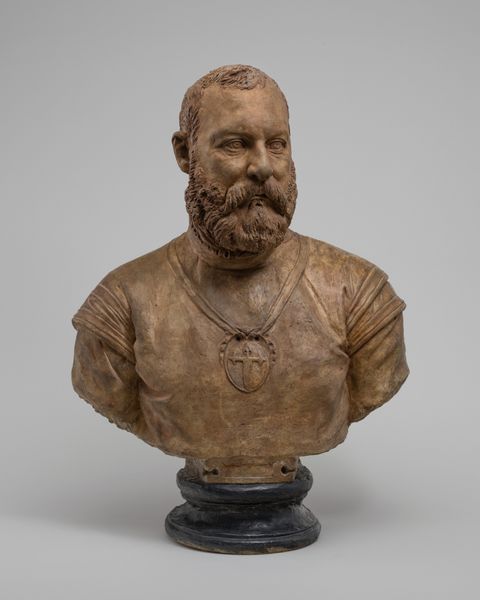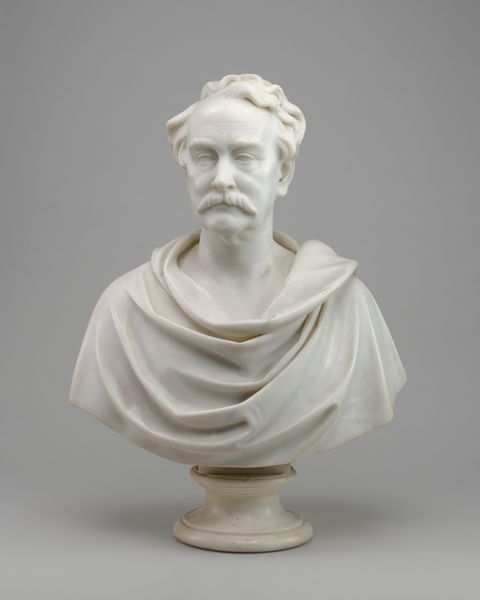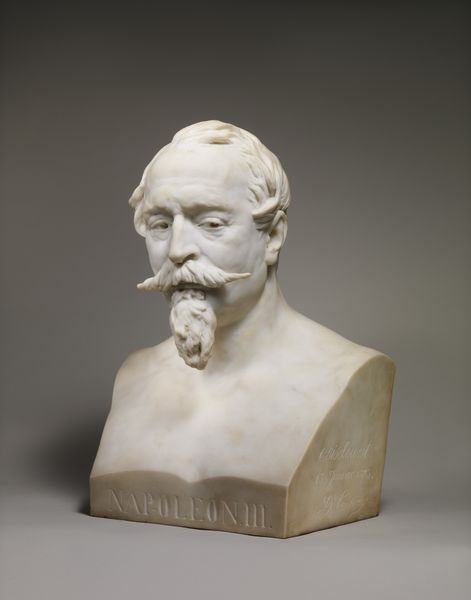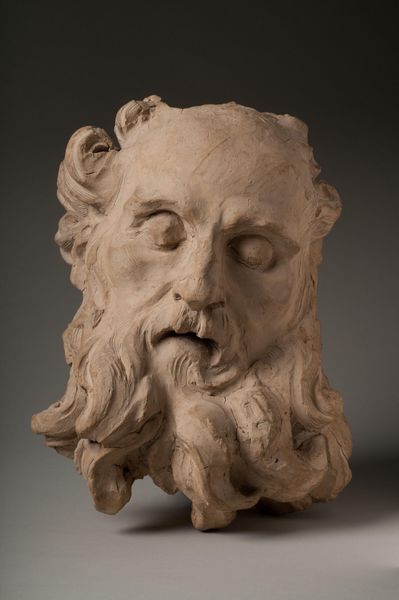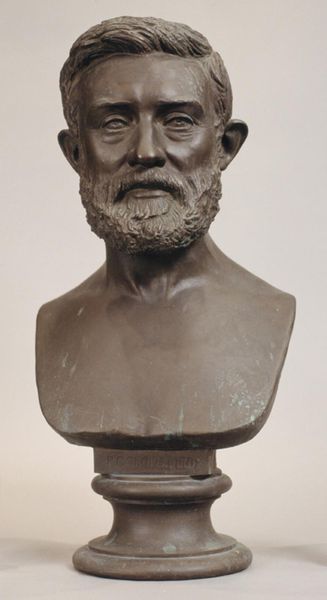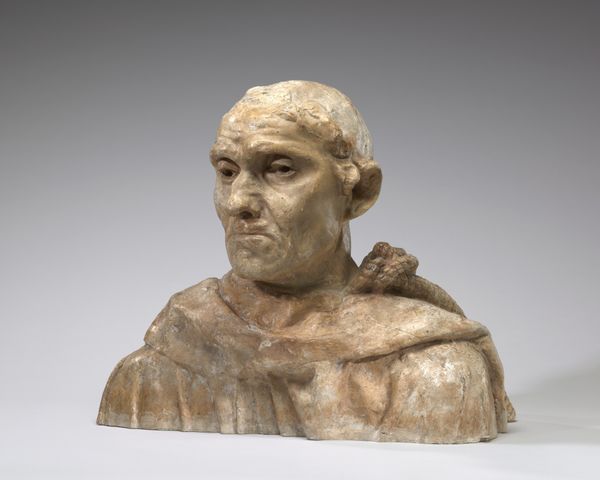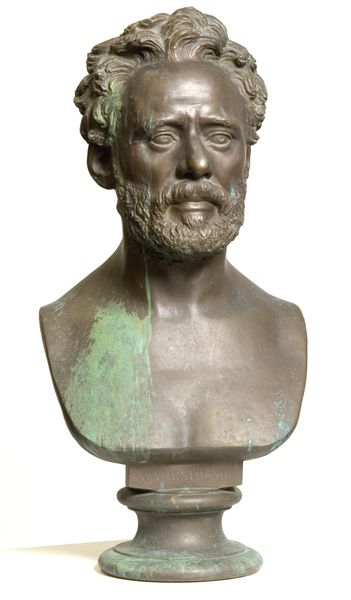
#
sculpture
#
charcoal drawing
#
sculptural image
#
unrealistic statue
#
sculpting
#
underpainting
#
charcoal
#
graphite
#
watercolor
#
statue
Dimensions: height 42 cm, depth 16 cm, width 30 cm
Copyright: Rijks Museum: Open Domain
Curator: Standing here before this sculpture, my immediate thought is one of muted power. It radiates this sense of learned authority, but something about the terracotta gives it an approachable quality too. What are your first impressions? Editor: I see a relic of a bygone era, embodying a legacy of exclusion. I find the ruff constricting, both literally and metaphorically, a symbol of the rigid societal structures that Grotius inhabited. The material is indeed interesting as the terracotta renders a different tone than one anticipates. Curator: You make an excellent point about the ruff, quite a period marker, isn't it? For context, this is a portrait bust of Hugo Grotius, crafted anonymously sometime between 1780 and 1790. He was a jurist in the Dutch Republic and known for his philosophical ideas on international law. A pretty impactful dude for his time. Editor: Yes, his theories are important, yet we must reckon with the colonial backdrop against which they were formulated. The history of international law is intertwined with the expansion of European power, and figures like Grotius played a role in shaping its ethical justifications. Do you get a sense of how the placement in the gallery plays on this and Grotius's relevance within an age of revolutions and calls for equality and self-determination? Curator: Definitely. I would like to suggest though, perhaps, this location offers an opportunity for reevaluation, juxtaposing a symbol of old authority against our contemporary understanding of human rights. Looking closer, the workmanship is amazing. You get an amazing feeling of precision and detail, down to the mustache, beard and subtle textures that suggest the skin is real, breathing… Editor: Absolutely, the details invite us to contemplate the tension between Grotius as an individual and as an icon. That texture that you note softens the effect. It's precisely these humanizing elements that invite us to consider both the brilliance and the flaws inherent in his historical position. Curator: I appreciate your highlighting of the complexities, offering more to view beyond simple admiration. Editor: Likewise, seeing this piece through your curatorial lens is crucial for grounding these intellectual discussions in tangible artistry.
Comments
No comments
Be the first to comment and join the conversation on the ultimate creative platform.
